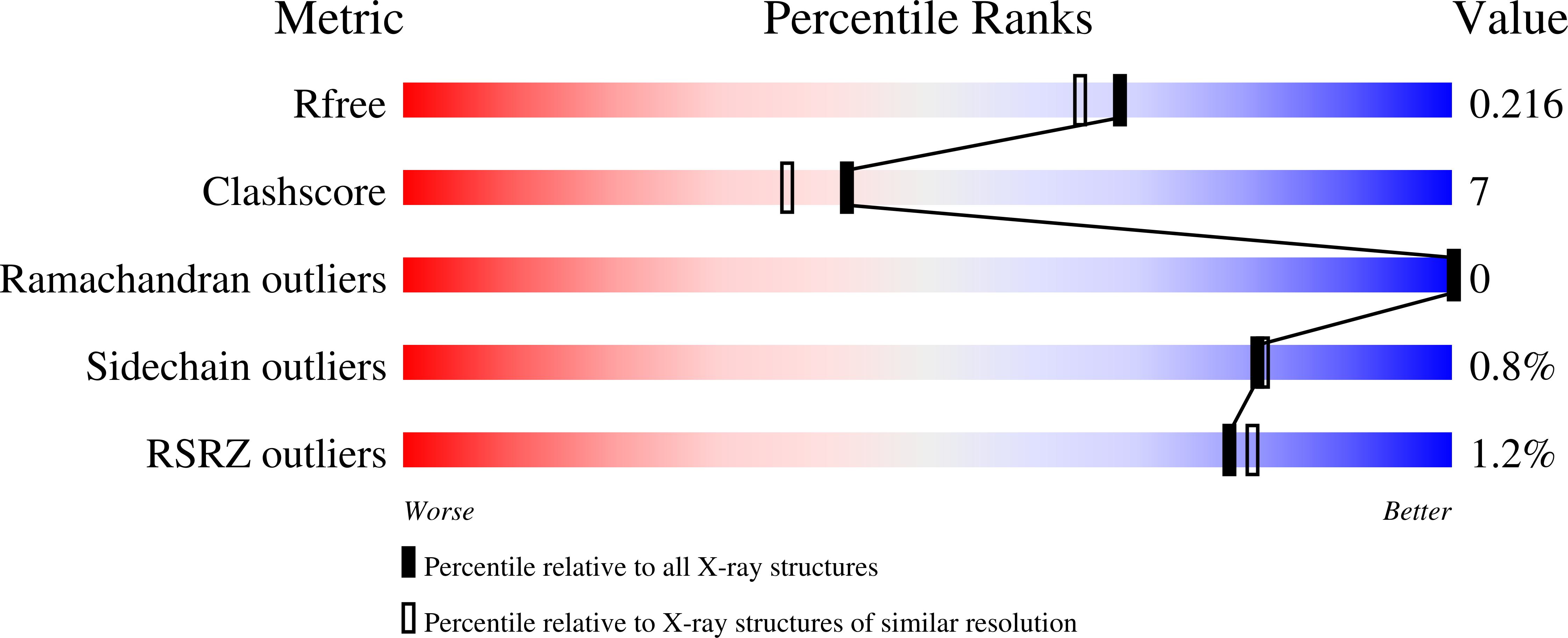Changing nucleotide specificity of the DEAD-box helicase Hera abrogates communication between the Q-motif and the P-loop.
Strohmeier, J., Hertel, I., Diederichsen, U., Rudolph, M.G., Klostermeier, D.(2011) Biol Chem 392: 357-369
- PubMed: 21391900
- DOI: https://doi.org/10.1515/BC.2011.034
- Primary Citation of Related Structures:
3MWJ, 3MWK, 3MWL, 3NBF, 3NEJ - PubMed Abstract:
DEAD-box proteins disrupt or remodel RNA and protein/RNA complexes at the expense of ATP. The catalytic core is composed of two flexibly connected RecA-like domains. The N-terminal domain contains most of the motifs involved in nucleotide binding and serves as a minimalistic model for helicase/nucleotide interactions. A single conserved glutamine in the so-called Q-motif has been suggested as a conformational sensor for the nucleotide state. To reprogram the Thermus thermophilus RNA helicase Hera for use of oxo-ATP instead of ATP and to investigate the sensor function of the Q-motif, we analyzed helicase activity of Hera Q28E. Crystal structures of the Hera N-terminal domain Q28E mutant (TthDEAD_Q28E) in apo- and ligand-bound forms show that Q28E does change specificity from adenine to 8-oxoadenine. However, significant structural changes accompany the Q28E mutation, which prevent the P-loop from adopting its catalytically active conformation and explain the lack of helicase activity of Hera_Q28E with either ATP or 8-oxo-ATP as energy sources. 8-Oxo-adenosine, 8-oxo-AMP, and 8-oxo-ADP weakly bind to TthDEAD_Q28E but in non-canonical modes. These results indicate that the Q-motif not only senses the nucleotide state of the helicase but could also stabilize a catalytically competent conformation of the P-loop and other helicase signature motifs.
Organizational Affiliation:
Institute for Organic and Biomolecular Chemistry, University of Göttingen, Göttingen, Germany.
















